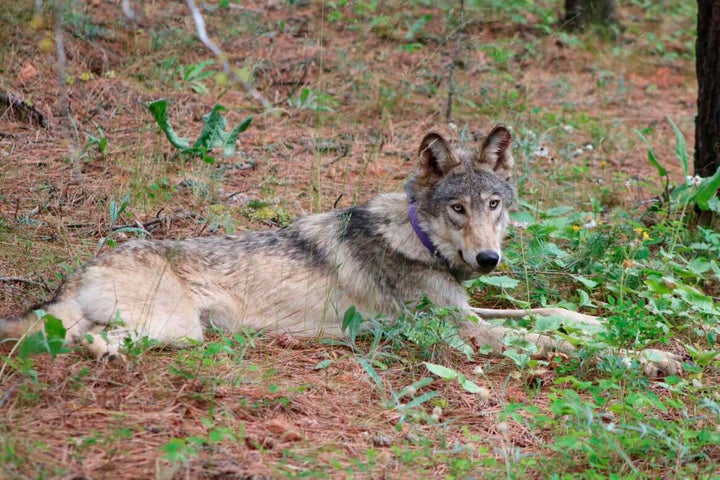
A federal judge on Thursday restored Endangered Species Act protections for gray wolves across much of the contiguous United States, concluding that the Trump administration ignored ongoing threats to smaller, more isolated wolf populations when it stripped the species of protections in 2020.
U.S. District Judge Jeffrey White’s ruling marks a major win for environmental and animal rights groups in their battle with the federal government over whether wolves still need ESA protections.
“This is a huge day for wolves across the country,” said Andrea Zaccardi, a lawyer with the Center for Biological Diversity. “Fish and Wildlife Service has tried to remove federal protections several times over the past decade, and every time they skirt the law in doing it.”
The U.S. Fish and Wildlife Service and its parent agency, the Department of Interior, both said they are still reviewing the decision.
The ruling redesignates gray wolves as a threatened species in 44 states and strips those states of their ability to manage local wolf populations through hunting and trapping. The relisting applies to the Great Lakes states, including Wisconsin: the site of a controversial wolf hunt last year that blew through the state’s 200-wolf harvest quota in three days.
“Today’s ruling restoring much-needed federal protections means that wolves will have a chance to fully recover and carry out their important ecological and cultural roles across the country,” Bonnie Rice, a senior representative of the Sierra Club, said in a statement.
But it does not affect wolves in the Northern Rockies ― including Montana, Wyoming and Idaho ― which Congress removed from the ESA in 2011. Those states have loosened hunting and trapping restrictions in a controversial effort to reduce wolf populations.
Unregulated hunting and government poisoning campaigns waged on behalf of livestock interests nearly wiped gray wolves off the map in the lower 48 by the early 20th century. They have since become one of the Endangered Species Act’s greatest success stories.
Since their reintroduction, beginning in Yellowstone National Park and Idaho in 1994, gray wolves have thrived in some areas. In both Idaho and Montana, populations stand about 10 times higher today than the minimum level of 150 that states have to maintain in order to avoid falling back under Endangered Species Act protection. Wolf populations have also grown in the Great Lakes region.
Smaller populations of wolves have also continued to disperse into new areas, particularly on the West Coast and in the Central Rockies.
Under the Trump administration, the Fish and Wildlife Service pointed to regions where wolves were thriving to argue that wolf populations across the continental United States had recovered.
But that logic failed to consider how wolves would fare without ESA protection outside the few areas where they’ve flourished over the last two decades. It also contradicted the agency’s earlier geographic designations of wolf populations and ignored recent scientific research showing the genetic distinctiveness of pockets of wolves outside the main recovery areas.
The Fish and Wildlife Service concluded “with little explanation or analysis, that wolves outside of the core populations are not necessary to the recovery of the species,” White wrote in his ruling.
The overturning of the Trump administration’s wolf delisting is likely to resurface longstanding tensions over how to manage the large carnivores, especially in the West. Ranching interests and some hunting groups have championed state management as a way to keep wolves from attacking livestock or big game animals.
But more liberal and urban constituencies have tended to favor letting wolves flourish. Some 1.8 million people submitted public comments opposing the Trump administration’s decision to delist wolves. A Colorado measure passed in 2020 requires the state’s parks and wildlife division to reintroduce gray wolves.
It’s unclear whether the Fish and Wildlife Service under President Joe Biden will fight Thursday’s ruling and continue its years-long effort to remove gray wolves from the ESA. But his administration’s interior secretary, Deb Haaland, appears more sympathetic to relisting wolves in the face of aggressive hunting and trapping campaigns.
In a recent op-ed in USA Today, Interior Secretary Deb Haaland wrote that new state laws in Idaho and Montana are jeopardizing decades of work to recover gray wolves in the northern Rockies.
“We will reinstate federal protections under the ESA for the northern Rocky Mountains’ gray wolf, if necessary,” she wrote.